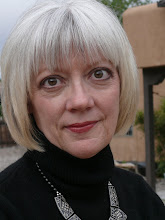I have been monitoring the patient safety literature for more than two decades now, first as the information project manager at the National Patient Safety Foundation, and for more than a decade as the development editor for AHRQ Patient Safety Network. As those in patient safety might attest and applaud, the evidence base has gotten more robust over the years, spurred by increased funding for research and public interest in the topic.
This expanding wealth of literature creates a challenge for organizations and individual practitioners. The unintended consequence of this explosion is that there is more wheat to sift through. The growing set of materials makes tracking useful evidence more cumbersome while in turn increasing the messiness of translating existing research results into actions that make sense and conclusions that are credible. We know that just because it’s science doesn’t necessarily mean it’s good science.
We know that just because it’s published, identified, and shared within an organization, community, or team that evidence derived from science is not necessarily applied or able to be translated for use on the front line. (Zipperer 2016)
While somewhat editorial in nature, Dr. Shojania’s presentation brought nuance to seeing how the evidence exploring these areas can play a part in our understanding of them.
There are tools out there to help with creating awareness of materials, such as AHRQ Patient Safety Network and the NPSF Current Awareness subscription service. However, not only should organizations have individuals trained to monitor these resources, also the search for particular evidence needs to address local gaps in understanding and effectively disseminate the literature to decision makers. Someone in the organization should navigate this output in order to help their clinicians and executives apply it if it is going to enrich the design of interventions and implementation of programs and contribute to enhancing the reliability of their patient safety work.
We could all use someone like Dr. Kaveh Shojania to help translate what is written to help create actionable knowledge in health care.
Dr. Shojania—with whom I work in my role at AHRQ Patient Safety Network, as he is on the editorial team—has for three consecutive NPSF Congresses provided a thoughtful and provocative analysis of key articles and the trends they indicate for conference attendees. This year’s session, entitled “Hot Topics in Patient Safety: Selected Papers Advancing the Field in the Past Year,” did not disappoint. Dr. Shojania covered literature on 6 important topics:
- Diagnostic errors
- Rudeness’ impact on team performance
- Trends in adverse events over time
- Incident reporting
- Fall prevention
- Reducing high-risk prescribing in primary care, with a focus on the current opioid abuse/misuse epidemic in the US
These themes should be no surprise to those in the patient safety community. While somewhat editorial in nature, Dr. Shojania’s presentation brought nuance to seeing how the evidence exploring these areas can play a part in our understanding of them. While some analysis of research design was applied, and the value of results was discussed, Dr. Shojania’s insights should enhance our ability to be more critical of what is published and by whom.
Imagine the opportunity that the sort of dialogue generated by this type of expert assessment could provide in an organization. The exercise could be brought to our care environments as more than a social or intellectually opportunity. If positioned as a patient safety improvement tactic, it could serve a more impactful role.
Dr. Shojania was challenged by an attendee, and his response provided thoughtful seeds for all of us who seek to partner to “plant” evidence-based solutions in the patient safety community garden. Imagine the learning and collaboration that could be generated in organizations if teams had these types of conversations on a regular basis, with accountability assigned to do something with the issues raised. Could the dialogues support increasing the transparency around sharing of ideas, forming of shared mental models, leveling of hierarchy, and engaging of individuals to form multidisciplinary teams to do research to reflect the frontline needs of improvers? Could be.
What tools, techniques, and team members do you use to identify, analyze, and infuse the most relevant literature to innovate and anchor patient safety efforts throughout your organization? Comment on this post below. Note: to post a comment you must be logged in. Register or log in.
Reference:
Zipperer L. Jones BB, Esparza JM, Wahr J. Evidence, information, and knowledge as elements of safe surgical care. In: Stahel P, ed. Surgical Patient Safety. New York: McGraw-Hill Education; in press.
Reused with permission.
This content was originally written for and published by the National Patient Safety Foundation’s P.S. Blog.
